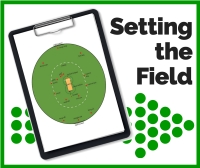Confusion Creates Leadership: What Rugby Teaches Cricket
 I’m lucky enough to work alongside some Rugby people every now and again and it has been a massive privilege to get to know many of the World’s best rugby players and coaching minds through my role in “Our Legend” holidays and events.
I’m lucky enough to work alongside some Rugby people every now and again and it has been a massive privilege to get to know many of the World’s best rugby players and coaching minds through my role in “Our Legend” holidays and events.
The Only Four Reasons You Lose Cricket Matches (and How to Stop Losing)
 We have all been there, sitting in the changing room, despondent and angry at losing the match.
We have all been there, sitting in the changing room, despondent and angry at losing the match.
Kohli's Wonderful Field Settings
 I watched some Test cricket in Mumbai this week, it was enthralling viewing. All 28 minutes of it!
I watched some Test cricket in Mumbai this week, it was enthralling viewing. All 28 minutes of it!
What Captains Learn from Great Skippers

Have you ever asked for captaincy feedback?
Those who are brave enough often pick up great insights that help shape their future and more effective leadership approaches.
How to Outthink a Batsman's Strength and Turn it to a Weakness

I watched a fascinating period of play in the 3rd England vs Pakistan Test Match from Headingley. James Vince was being forensically investigated by the excellent Panistani left arm seamers.
How to Captain: Placing the Fielders
This is part three of a series on how to captain in the field. To go to part one click here. To go back to the introduction click here.
Along with bowling changes, field placing is the other obvious part of captaincy in the field.
The simple way to look at it is to put the fielders where you think the ball is most likely to go (not always just where it has gone).
How do you do that without resorting to the stock fields that everyone uses?
Before we get into that, a word about orthodox fields: They are orthodox because they have been proven to work over the test of time. Slips remain in place because batsmen through the ages continue to edge the ball wide of the wicketkeeper. Mid on and mid off exist because even the most extreme Twenty20 specialists play shots with a straight bat sometimes.
That said it's important not to mindlessly follow what you consider the norm. Just because every captain in your club starts the game with a couple of slips, a gulley and a saving one field it does not mean you should.
For the basic theory of field placing take a look at my article here.
Once you have that in your mind, let's go back to the basic aim of field placing: Putting your players where you think the ball will go.
Tactics You Should Be Using: Funky Field Settings
In the first Ashes Test of 2015, England brought in another weird fielding position: the silly slip.
Joe Root, helmet-clad, took a position at third slip that was far too close for comfort. It was reasonable considering the slow pitch and the low chance of an edge carrying to orthodox third slip. Successful or not, it is another in the long line of "funky" fielding positions that span back to the 1970s (at least).
Yet, club and school cricket remains staunchly formulaic. Is there something we can learn from the pros here?
Setting the Field: Theory and Practice
 From orthodox to funky; being a better captain and bowler means mastering the art of setting the field in your cricket matches.
From orthodox to funky; being a better captain and bowler means mastering the art of setting the field in your cricket matches.
Chances are you know fields that suit certain bowlers and match situations. There is much more to it that that though. There are some underlying principles of field setting that allow you to become more flexible while basing everything in solid logic.
The result of understanding the core of field setting is that you can have the right players in the right places at the right time. And that's going to get you more wickets.
5 Cricket Lessons Taught by Dhoni Before he Retired
 Dhoni has quit Test cricket, and has left behind a rich history of entertainment for millions. He has also taught us a lesson or two along the way.
Dhoni has quit Test cricket, and has left behind a rich history of entertainment for millions. He has also taught us a lesson or two along the way.
As tribute, here are some of PitchVision Academy's favourite articles about the wicketkeeper who lead by example with bat, gloves and sometimes even ball:
CRICKET JOBS: Coach - Essex Autogroup Graham Gooch Cricket Centre (UK)

Closing date: undisclosed
Job Title: Coach at Essex Autogroup Graham Gooch Cricket Centre

